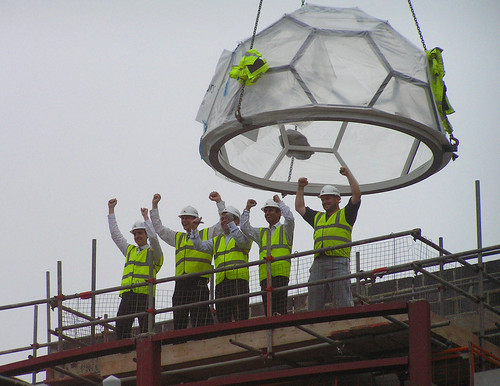Well, it is no wonder that the U.S. National Nanotechnology Initiative has been distancing itself these past few years from its key architect, Mihail C. (Mike) Roco. Take a look at some of the Mad Romanian's wacky ideas below.
I've retained the paranoid commentary contained within thepeoplesvoice.org's "Television and the Hive Mind" for comedic value, but the quotes from Roco's 2002 paper "Converging Technologies for Improving Human Performance" are indeed accurate (although the writer makes reference to a "recent report." I suppose if you measure time by the long march toward world socialist domination, 2002 is "recent):
"A recent report co-sponsored by the U.S. National Science Foundation and the Commerce Department calls for a broad-based research program to find ways to use nanotechnology, biotechnology, information technology, and cognitive sciences, to achieve telepathy, machine-to-human communication, amplified sensory experience, enhanced intellectual capacity, and mass participation in a 'hive mind.'Quoting the report: 'With knowledge no longer encapsulated in individuals, the distinction between individuals and the entirety of humanity would blur. Think Vulcan mind-meld. We would perhaps become more of a hive mind--an enormous, single, intelligent entity.'
There is no doubt that we have been brought closer to the 'hive mind' by the mass media. For, what is the shared experience of television but a type of 'Vulcan mind-meld'? (Note the terminology borrowed from Star Trek, no doubt to make the concept more familiar and palatable. If Spock does it, it must be okay.)
This government report would have us believe that the hive mind will be for our good--a wonderful leap in evolution. It is nothing of the kind. For one thing, if the government is behind it, you may rest assured it is not for our good. For another, common sense should tell us that blurring the line 'between individuals and the entirety of humanity' means mass conformity ..." and blah blah
Yeah, that does explain why we haven't heard much from Roco for a couple of years. As a nanotech goodwill ambassador, he makes the Drexlerians, cryonicists and space elevator true believers seem like a sober panel of Royal Society fellows.
Backgrounder
NanoBot's discard pile
NanoBot's Discard Pile, Part 2


